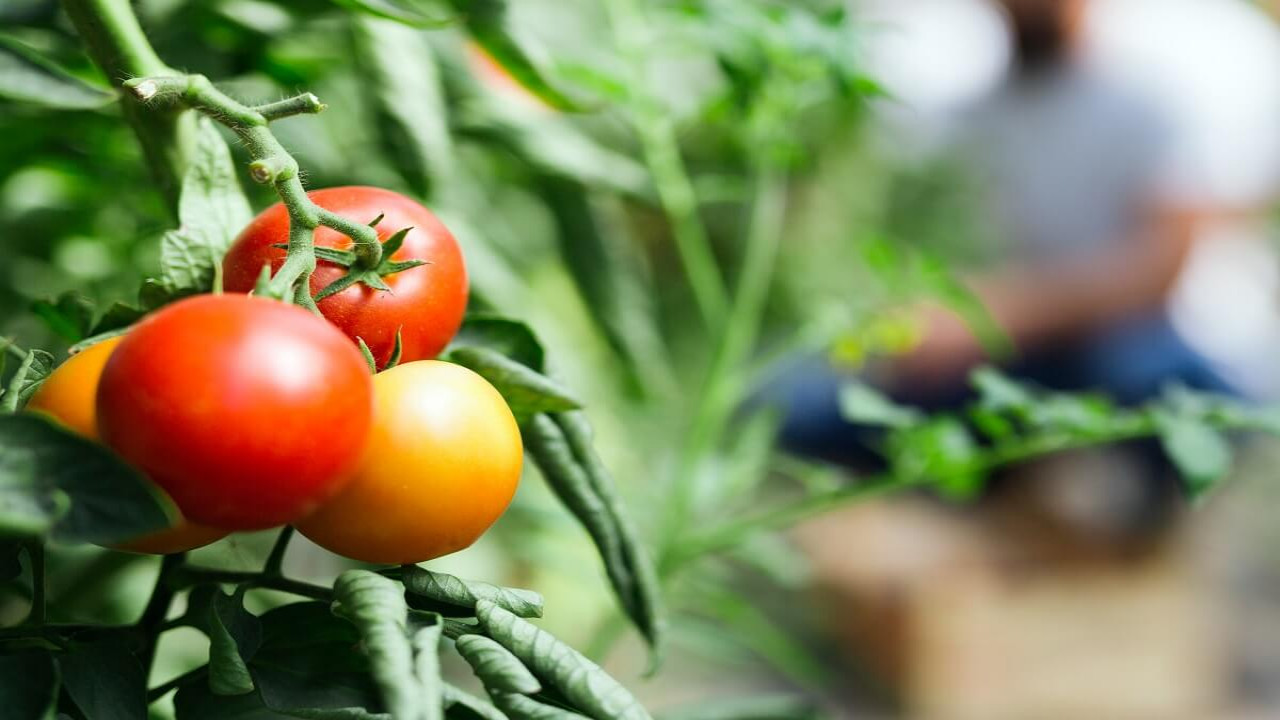
Greenhouse Tomato Disease Problems—And Solutions
June 7, 2022, 8:18 am
Despite greenhouse farming being one of the most profitable ways to grow fruits and vegetables tomato disease is a problem that affects greenhouse farming.
The most common vegetable grown in a greenhouse farm is tomato. Tomato yield from greenhouse farming is extremely good but certain diseases are experienced with tomatoes grown in greenhouse farms that affects yields
Greenhouse Tomato Diseases
The most common greenhouse tomato disease seen with tomato growing in greenhouse farms are as follows:
Blossom-End Rot (BER)
This physiological tomato disease is caused by inadequate movement of calcium into the fruit. BER occurs at low soil moisture and is more severe when plants have small, shallow root systems. Plastic mulch can restrict the movement of water to the root zone and increase BER. Hot, windy conditions increase water loss from the plant and increase the incidence of BER.
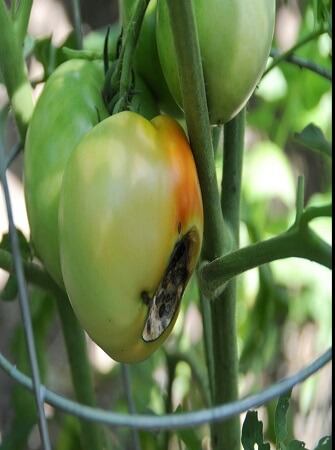
How to solve BER
Be sure soil calcium is sufficient and in balance with other essential plant nutrients. Test the soil and apply lime and fertilizer according to recommendations, then lay plastic mulch when soil moisture is optimal for planting. Apply irrigation to wet the root zone and encourage deep root development.
Blotchy Ripening, Graywall and Internal White Tissue
These problems are a complex of physiological disorders and pathological diseases. Blotchy Ripening and graywall often appear on shaded fruit growing in the interior of dense vegetative plants. Yellow-eye, a ring of yellow tissue surrounding the blossom scar, often occurs in fruit with blotchy ripening and internal white tissue.
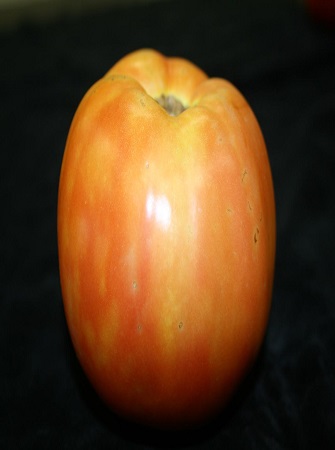
Blotchy ripeningis when areas of the fruit do not ripen or do so after the rest of the fruit is ripe. White or yellow blotches may appear on the surface of the fruit while the internal tissue is still hard. Usually this disorder occurs on the upper portion of the fruit and there is no internal browning of the fruit. This disorder is more often seen during cool, wet and cloudy conditions. It is worsened by too much or too little water. High N and/or low K will cause an increase in the disorder. Older varieties are often more susceptible to this disorder.
How to solve Blotchy Ripening
Research indicates that for proper fruit color development higher K levels than are necessary for yield alone are needed. Soils and plants with high K had lower levels of the disorder. Foliar applications of K were not totally effective in reducing the disorder. Also, field trials suggests that soils high in organic matter (above 3.5%) helped to reduce the disorder in a tomato crop. In addition, soils with a pH of 6.4 had low incidence of yellow shoulder while tomatoes grown on soils with a pH above 6.7 had a high incidence.
Greenhouse farmers should have K tissue levels of at least 3% before fruit is one inch in diameter. In addition, the ratio of Magnesium (MG) to Calcium (Ca) is important and a ratio of Mg:Ca of 1:4 to 1:6 should be maintained in the crop.
Graywall
This appears as grayish and sometimes sunken areas on a fruit. Internally the vascular tissue is brown resulting from collapse of the tissue. This can occur on the outer part of the fruit as well as in the center. It is usually more of a problem with cool, short days and often occurs in a late tomato crop. Graywall usually develops in green fruit but can occur as fruit is ripening. Fruit do not ripen properly and will have a blotchy appearance making them unmarketable.
Graywall occurs on any part of the fruit. High N may increase the incidence of graywall and adequate K may reduce the problem. The disorder may also be caused by stress on the plants resulting from drought, excessive heat, root problems, severe nutrient deficiencies, etc. and there are varietal differences in susceptibility. This disorder is not clearly understood. Note that internal browning can also be caused by tobacco mosaic virus (TMV).
Internal white tissue
This is a tomato disease where the fruit usually show no external symptoms. When a ripe, affected fruit is cut there will be white, hard areas found in the outer tissue and sometimes in the center of the fruit as well. High temperatures during ripening are believed to be the cause of this disorder.

How to treat Internal White Tissue
Maintaining adequate K in the soil may reduce but not eliminate it. Some varieties are more susceptible to this disorder, especially high colored varieties. This disorder can be severe enough to cause fruit to be unmarketable.
Catfacing
Catfacing is where fruit are malformed and scarred, usually at the blossom end. It is caused by exposure of seedlings to 60-65°F (16-18°C) day temperatures and 50-60°F (10-16°C) night temperatures for 1 week, approximately 4 weeks before pollination. The first flower cluster is susceptible to low temperature-induced catfacing when seedlings have 4-5 true leaves. Fruit on later clusters will show catfacing if exposed to low temperatures in the field. Avoid hardening seedlings by exposure to low temperatures. Varieties differ in their susceptibility to the disorder.
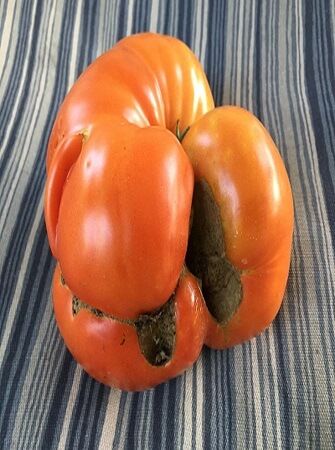
Cracking
Cracking is due to the rapid uptake of water, resulting in enlargement of cells and separation of the epidermis of the fruit. Water can be taken up through the roots or through the tissue around the stem scar. The type of cracking (concentric, radiating out from the stem, or diagonal or transverse cracks across the fruit) is determined primarily by fruit structure and variety. Different types of cracking may be present in a variety or an individual fruit.

The severity of cracking is determined by water availability, variety and maturity. As the fruit ripens, the bonding between cells progressively weakens, resulting in more severe cracking. High rainfall and irrigation, or frequent low to moderate rainfall, especially following a period of low soil moisture may increase cracking.
How to treat Cracking
To minimize cracking, select a crack-resistant variety, maintain a high calcium level in the soil and keep fruit growing at a uniform rate by maintaining uniform soil moisture levels. Maintain good fruit cover by proper fertilization and fungicide applications. Harvest fruit at the earliest stage of maturity that is acceptable by your market.
Russeting
Russeting, or weather checking of the surface of the fruit is caused by the presence of water on the fruit surface for extended periods of time when there are frequent light rainfalls, mist, fog, and dew. Wide fluctuations in temperature of exposed fruit also contribute to this disorder. Russeting can cause fruit to be unmarketable. Maintain good fruit cover by proper fertilization and fungicide applications. Use varieties that feature a dense canopy and resistance to foliar diseases.
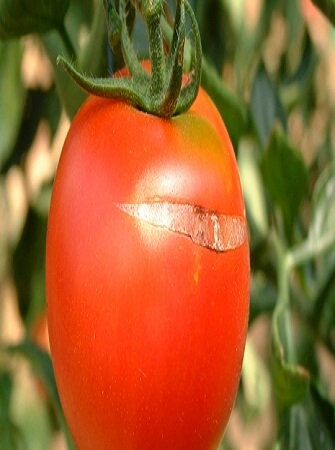
Sunburn and Sunscald
Sunburn and sunscald result from exposure to direct sunlight. Mild sunburn appears as yellowish or yellow-red color of fruit on the side exposed to the sun. Severe symptoms appear as whitish, water-soaked, scalded, or blistered areas. Sunscald is more severe on fruit that developed in shaded conditions but was exposed to direct sunlight after defoliation or harvesting. Under dry conditions, the white areas can become dry and leathery. Secondary infection can produce a dark, dry rot. Under moist conditions, scalded areas can decay from secondary infections.
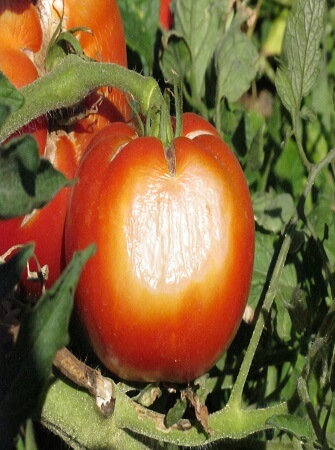
How to treat Sunburn and Sunscald
To control sunburn and sunscald, select varieties with good fruit cover, supply sufficient water and nutrients to provide good vegetative growth and manage pests. Train workers to avoid turning vines during harvesting or to reposition vines to shade fruit.
Yellow Shoulders
Yellowing may occur on the shoulders of fruit exposed to the sun, especially on varieties that have darker green shoulders when immature (those lacking the uniform ripening gene). The tissue beneath the yellow shoulder is usually corky and may vary from greenish white to pale yellow. Select varieties with the uniform ripening gene and provide good fruit cover as described above

Tomato Harvest and Post-Harvest Considerations
Depending on marketing requirement, tomatoes may be harvested at the mature green stage (when and after which the fruit cavity is filled by gel), breaker stage (just showing pink at the bottom of the fruit), semi-ripe (with different amounts of red pigmentation) or fully ripe. Fruit are very perishable and subject to surface and internal damage, and must be handled with care. If tomatoes are to be harvested at breaker, partially ripe, or vine-ripe stages, fields should be harvested often and thoroughly to hasten the ripening of later fruits and reduce the range of ripeness.
Harvesting every day may be desirable during peak season. Remove all diseased, misshapen, and otherwise cull tomatoes from the vines as soon as they are discovered. Remove discarded tomatoes from the field to avoid the spread and buildup of diseases and insect pests. For standard slicing tomatoes, cherry tomatoes, and plum tomatoes, remove the stem during picking. Cluster tomatoes are harvested with the whole truss attached to fruits.
Tomatoes should be washed sufficiently to remove dust and foreign material, by hand or mechanically by spraying them with chlorinated water as they move over a set of soft brush rolls. The small amount of retained water may be removed by absorbent rollers alone or in combination with an overhead air-blast drier. The wash water should be several degrees warmer than the pulp temperature of the tomatoes to avoid drawing water and disease organisms into the fruit. The water should be chlorinated at the rate of 125 ppm. The chlorine level and pH (6 to 7) of the wash water should be checked at least hourly during the day with test papers or a meter. Tomatoes are then sized and separated by color and grade and carefully packed into 11kg boxes.
If you would like to see how to implement all these steps so you can have a successful tomato greenhouse farming business, sign up to watch our greenhouse farming video tutorial.

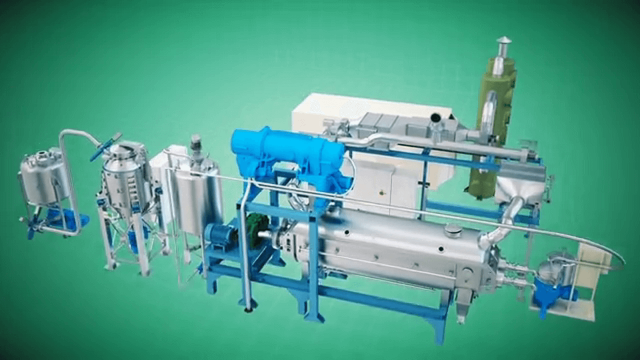
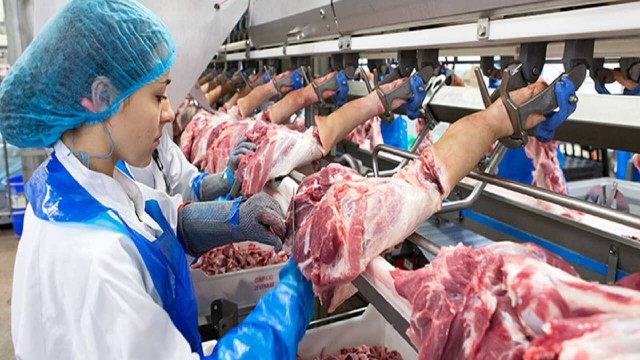
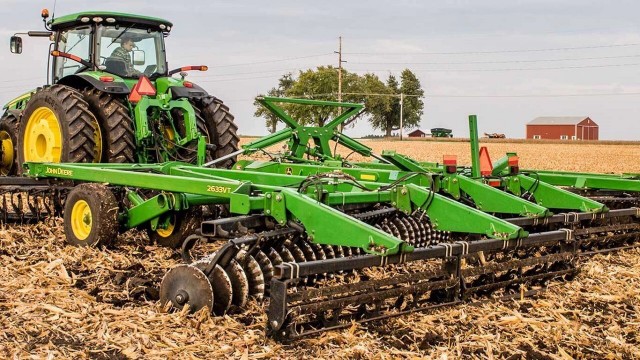
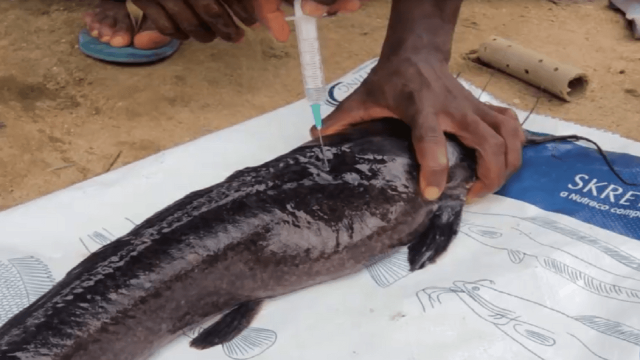





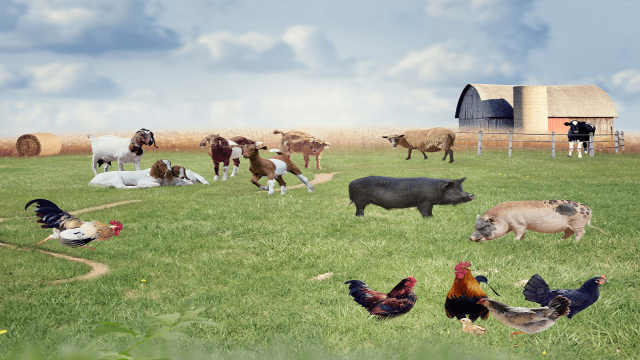

Share This Article: